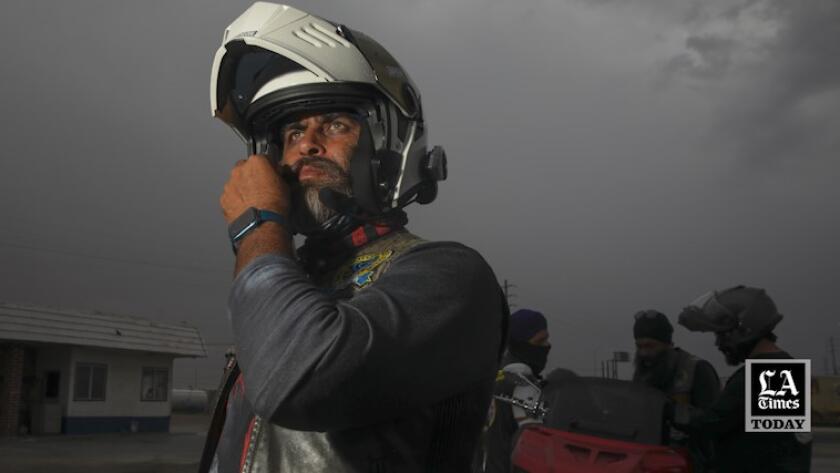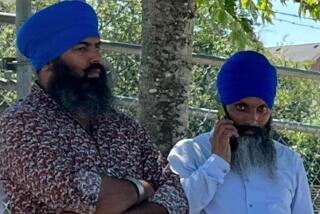
OAK CREEK, Wis. — Gurdeep Singh Saggu sat on the carpet of the Stockton Sikh Temple prayer hall, staring at the photographs of the seven Sikhs killed in a 2012 mass shooting in Wisconsin.
Across the room, his wife, Ekdeep, and their sons, 5 and 10, sat cross-legged, listening to an FBI agent recount how a white supremacist strode into a Sikh temple in Oak Creek in search of victims.
Until that moment, Saggu’s older son, Akaaldeep, didn’t understand why his father was joining his motorcycle club on a 2,700-mile ride to mark the anniversary of the Aug. 5, 2012, massacre.
Saggu, 37, soft-spoken with a wiry beard, had been torn about the trip. The members of Sikh Motorcycle Club USA had planned the weeklong ride to Oak Creek to raise awareness about their culture and faith. Their route would take them through Arizona, where it would be unusual to see turbaned bikers with black leather vests emblazoned with the Sikh faith symbol. A state where a Sikh man, mistaken for a Muslim, was killed in a hate crime four days after 9/11.
The ride would end Aug. 5 in Oak Creek.
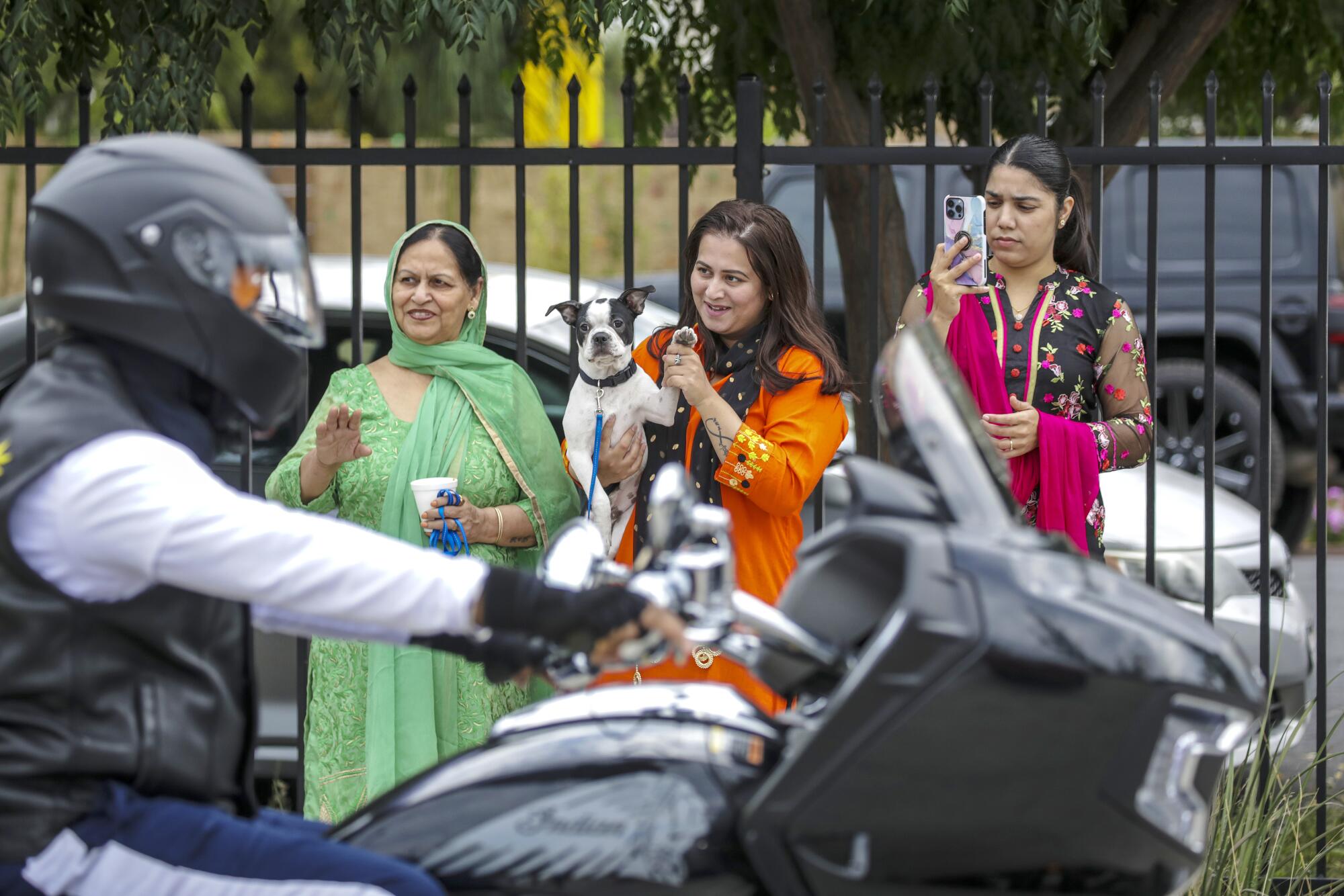
But Saggu hesitated to leave his family, especially his sons. The prospect of violence — that they could be attacked for their religion — meant he was always on guard.
Saggu hadn’t spent a night away from them since Akaaldeep’s birth. He drove his boys to school every day and brought them home after class to do their homework. He watched over them while his wife, a teacher, worked.
Earlier that morning, Akaaldeep had begged him to stay home. But the presentation in the temple turned out to be a turning point. Akaaldeep cried about the deaths and hugged Saggu, saying, “Daddy, now I want you to go.”
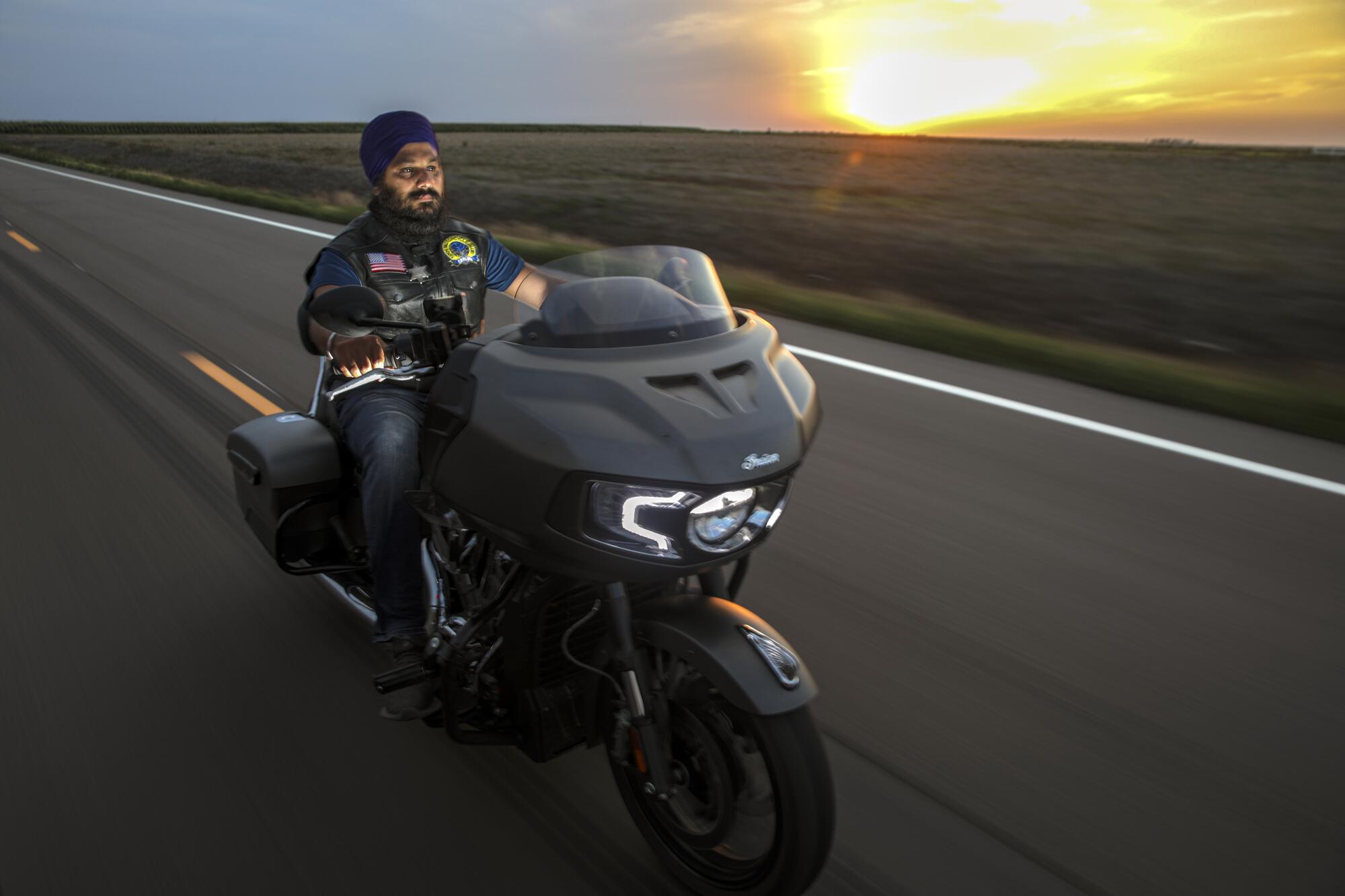
Saggu thought back to their time in Dayton, Ohio, where they’d been living five years earlier. Akaaldeep was bullied at school because of his turban; he came home crying and angry every day. Parental complaints fell on deaf ears.
Saggu was familiar with that sense of helplessness. A supervisor at a shipping company, he had been dealing with a co-worker who looked at his beard and turban and accused him of belonging to a terrorist group. One day, he said, a co-worker attacked him, driving into Saggu’s car on the driver’s side.
Hugging his son in the prayer hall, recalling that misery and frustration, Saggu told himself: “I have to do this.”
The Stockton Sikh Temple, established in 1912, sits near a rail yard, across from a row of homes with chain-link-fenced yards. It was the first Sikh house of worship in the United States and, for years, served as a cultural and political hub for South Asian immigrants, largely from the state of Punjab, a region that was split into modern-day Pakistan and northern India.
Punjabis, most of them young men, started to arrive in California in the late 1800s. They settled in the Sacramento, San Joaquin and Imperial valleys and worked on farms and in lumber mills and railroad construction. They helped build the Western Pacific Railroad and served in the military.
But their arrival, amid a wave of anti-Asian sentiment, prompted the U.S. government to limit immigration from Asia. Punjabis were barred from becoming citizens and leasing and owning agricultural land. The men were prohibited from bringing family to the U.S., and some of them married Mexican women, resulting in Punjabi Mexican communities.
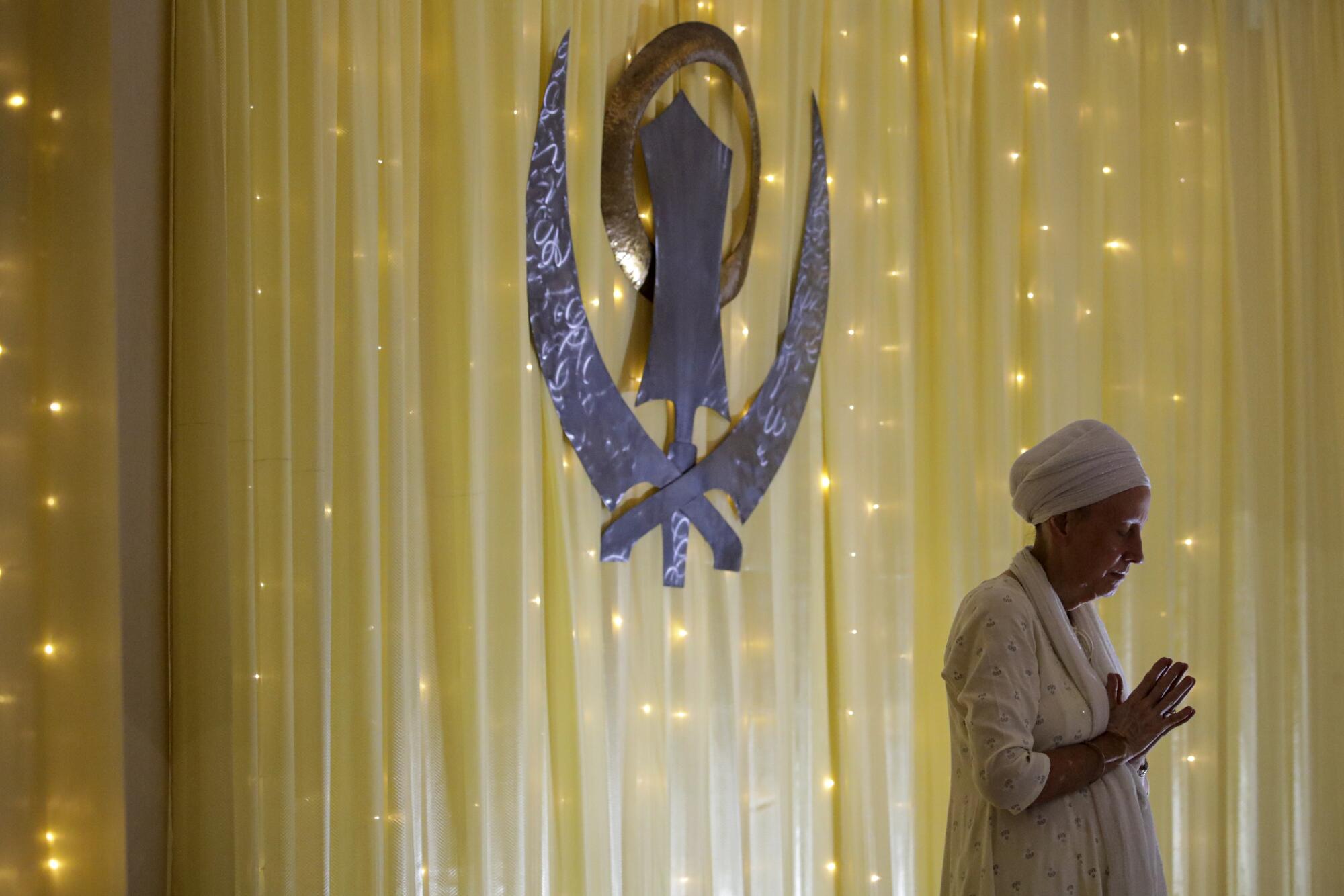
Eventually, the federal government allowed them to become citizens and landowners. Punjabi farmers grew peaches, grapes, almonds and other crops and gained a reputation for their ingenuity in developing agricultural techniques.
Most Punjabis who came to the U.S. were followers of Sikhism, a monotheistic religion founded in the late 15th century by Guru Nanak. They believe in equality, social justice and community service, and observant Sikhs are not allowed to drink alcohol, eat meat or cut any hair on the body. Today, there are more than 100,000 Punjabis living in California and as many as 500,000 nationwide.
Despite their history of patriotism and contributions to California’s economy, Sikhs have long been targets of racism and violence. With their beards and turbans, they continue to be mistaken for Muslims; hostilities skyrocketed after the Sept. 11, 2001, terrorist attacks.
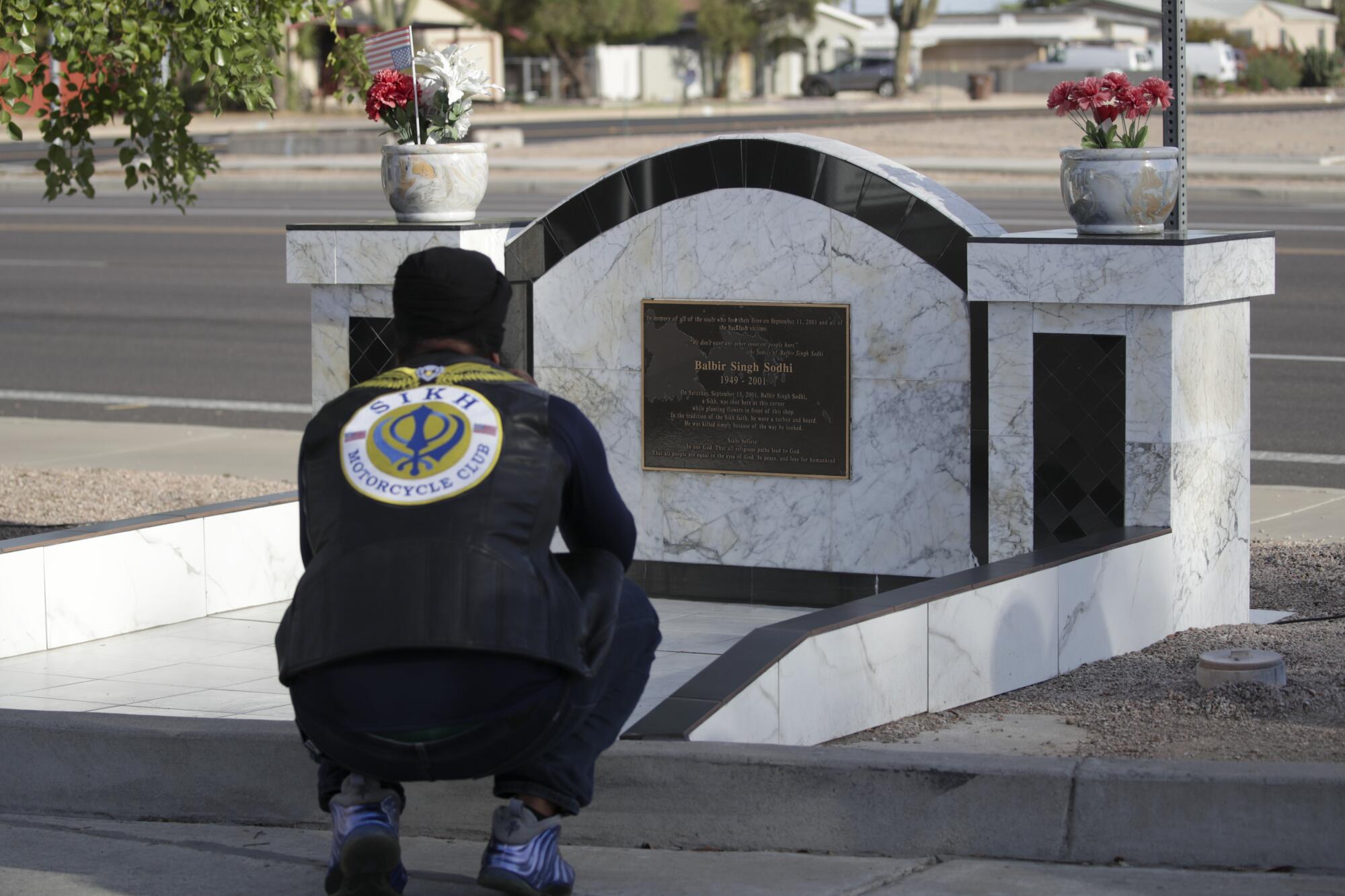
Four days after the towers fell, a white gunman drove to a gas station in Mesa, Ariz., and fatally shot 49-year-old Balbir Singh Sodhi, a Sikh who had been planting flowers around his business. He became the first victim of a hate crime linked to 9/11.
Prosecutors and witnesses said the gunman, Frank Roque, mistook Sodhi for a Muslim. Roque was found guilty of murder and died in prison in May.
The 21st century wave of violence inflicted on the Sikh community led to the formation of the Sikh Coalition, which documented more than 300 cases of violence and discrimination in the month after 9/11. Sim J. Singh Attariwala, senior manager of policy and advocacy for the organization, said anti-Sikh hate crimes went unnoticed for years because the FBI wasn’t tracking them. That changed after the Oak Creek massacre.
Hate crimes against Sikhs and Muslims surged again in 2017 after President Trump’s executive order that prohibited travel and refugee resettlement from some Muslim countries, and recent FBI crime data show that anti-Sikh hate crimes are still on the rise. From 2020 to 2021, the FBI recorded a 140% increase in anti-Sikh hate crimes — from 89 incidents to 214 — making Sikhism one of the most targeted faith groups in the United States.
“It is an alarming trend,” Attariwala said, “one that we’re deeply concerned about.”
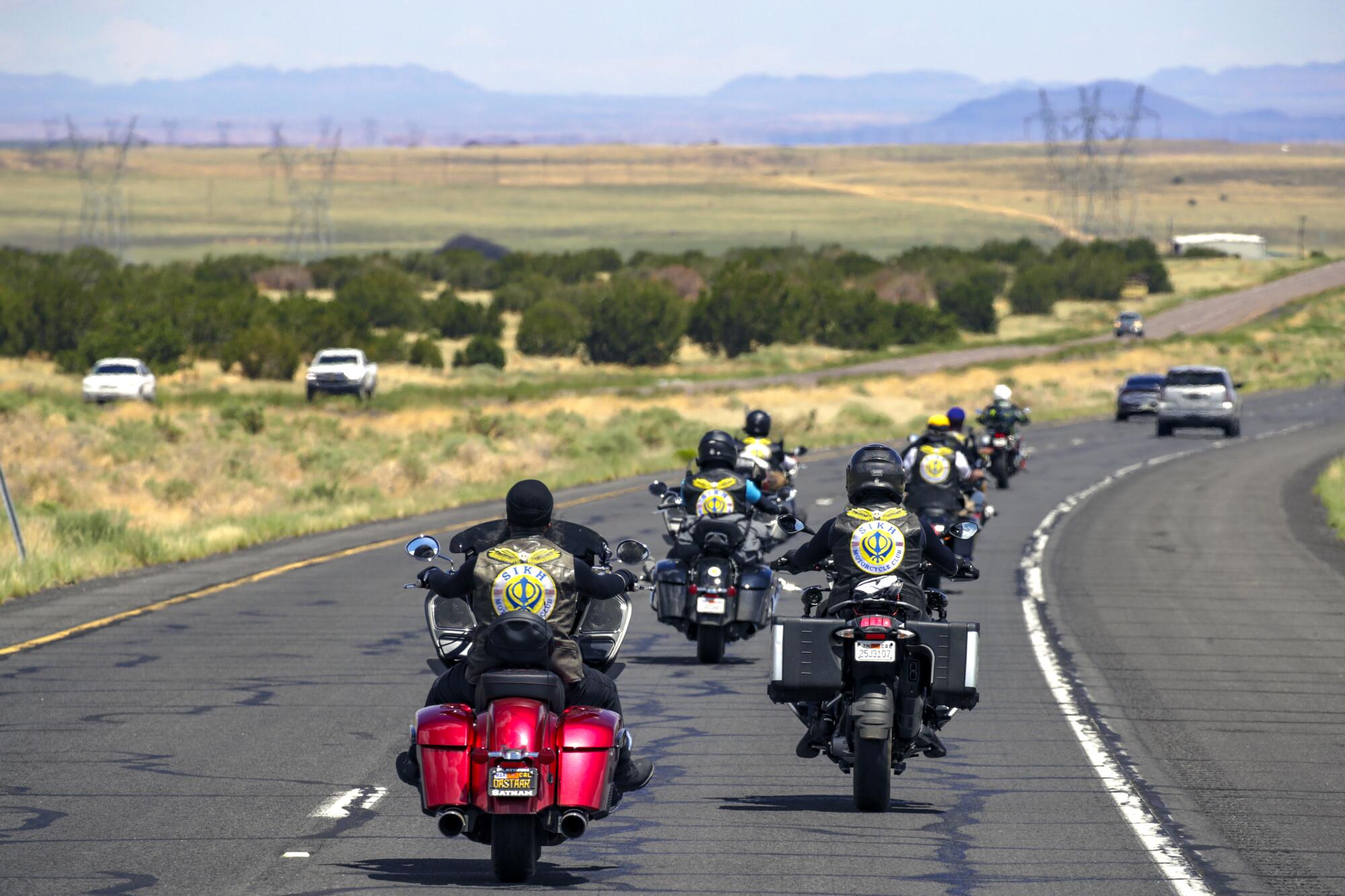
On the day of the ride, dozens of Indian and Harley-Davidson motorcycles were parked along Sikh Temple Street in Stockton, some adorned with personalized license plates such as KHARKU (“brave man” in Punjabi) and GABRU (“young man”). One by one, Saggu and the other men kicked their kickstands, gripped the handlebars and gunned it down State Route 99, setting off in an open-throttle roar that would be the soundtrack of their pilgrimage.
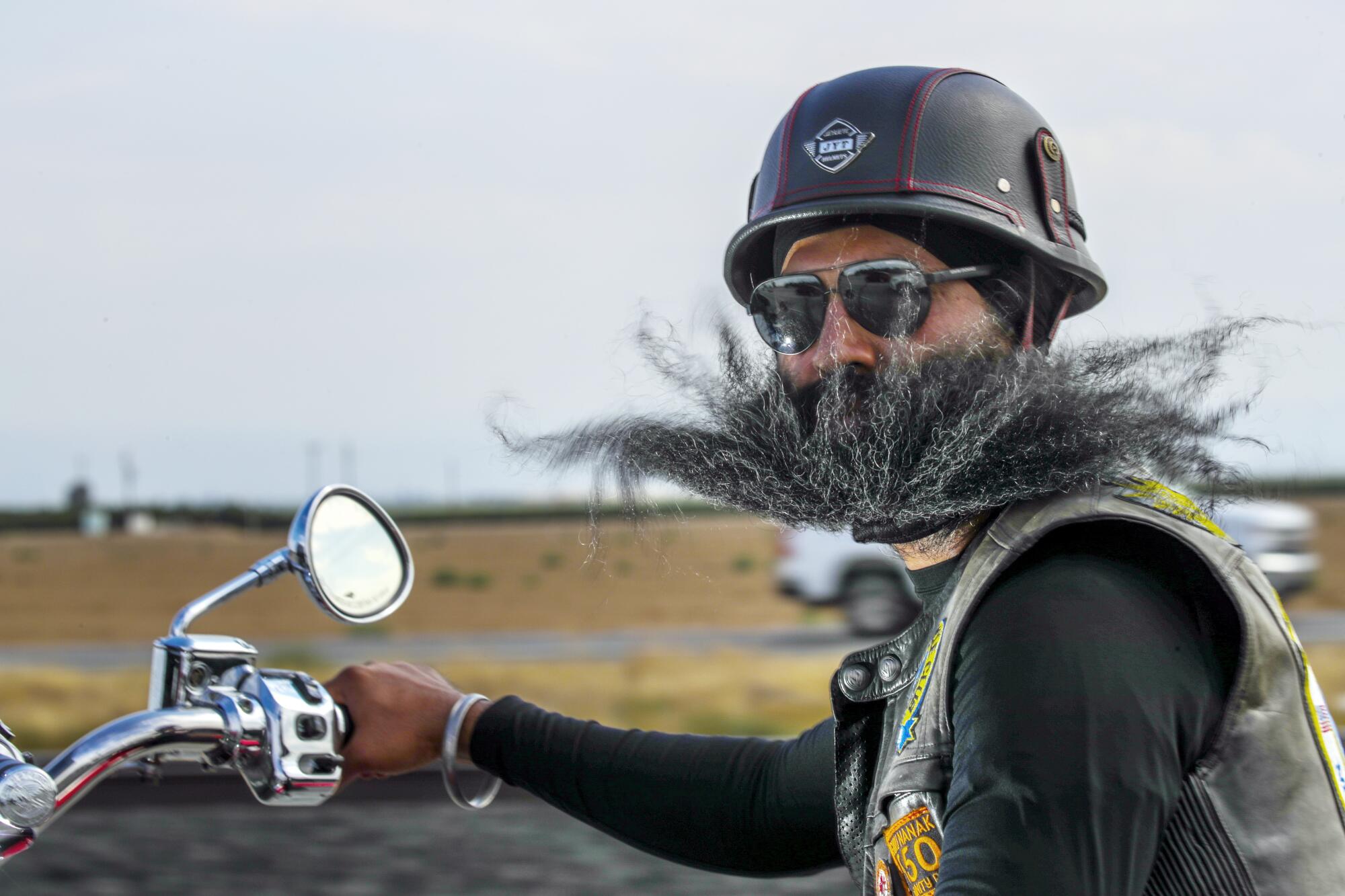
On a two-lane highway in Blythe, near the Colorado River, the Sonoran Desert air blasted their faces. Their beards flapped wildly, whipping their skin as distant waves of heat warped and blurred the landscape. With temperatures in the triple digits, the men were sweating profusely.
A black truck hauling a trailer displaying photos of the seven Sikhs killed in Wisconsin trailed the riders. Above the images, in black lettering, a Sikh scripture read: “No one is my enemy, and no one is a stranger to me. I get along with everyone.” Beneath it was the club’s core mission: “Ride against hate.”
Once they crossed into Arizona, the group decided to ride the rest of the trip without helmets, hoping their turbans would draw attention and lead to conversations or, at the very least, get people to notice the trailer.
“Maybe they’ll see it and will want to Google it to read about us and what we’re about,” Saggu said.
In the late afternoon, they took a break at the Indian Delhi Palace, a Phoenix restaurant owned by Sodhi’s younger brother Rana Singh Sodhi, who’d been waiting outside to welcome them. Inside, a buffet of vegetable curries, rice and salads awaited — a “thank you” to the motorcyclists for what they were doing. In addition to honoring the victims of the Oak Creek massacre, the riders were hoping to educate the public along the way about the differences between Sikhs and Muslims
while robustly condemning attacks against Muslims and other minorities.
“I think any effort to raise awareness about our community is important,” said Sodhi, 56. “I’m so proud of them.”
He looked at the motorcycles parked outside and recalled another brother lost to violence in a country that had given him so much. Ten months after Balbir was murdered at the gas station, Sukhpal Singh Sodhi was found shot to death in his taxi in San Francisco. Police said it was not a hate crime, but Sodhi believes that his brother’s appearance factored into his death.
Their next stop was a memorial in Mesa that marks the spot where Balbir Singh Sodhi screamed, “Don’t kill me,” before he was shot.
As he gazed at the marble slab, Saggu thought about how he could have been lying dead in a parking lot just like Sodhi, the victim of twisted rage. He thought of the co-worker at the shipping company who asked whether he belonged to the militant group Islamic State and why he wore a “towel” around his head.
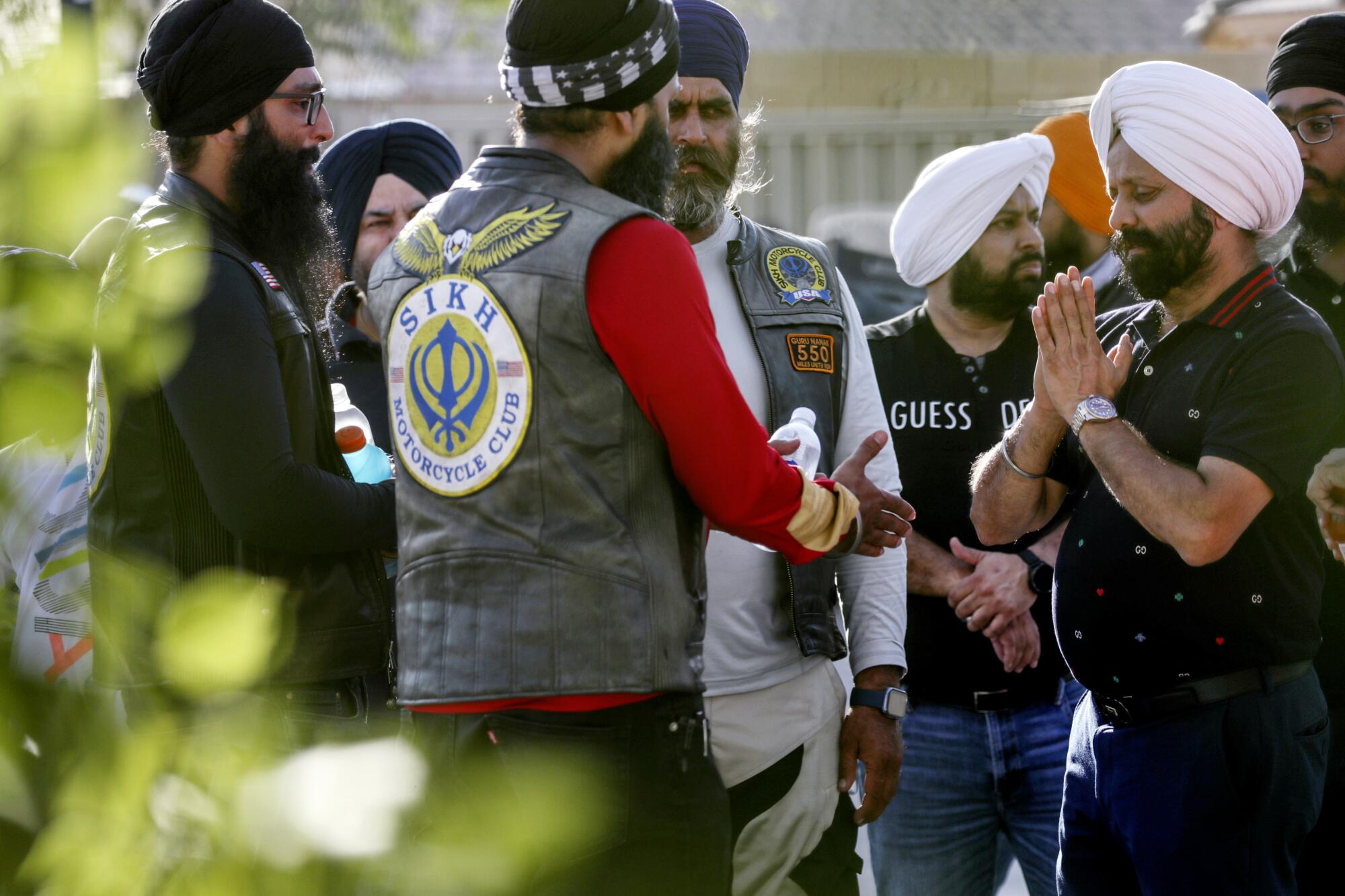
The next day, members of the motorcycle club headed northeast, crossing into the badlands of Arizona’s Painted Desert, engines roaring amid the red mesas and cottonwood gulleys. At the Four Corners Monument, they tried to speak with visitors and Native people about Indigenous culture. One man turned two members away, declining to accept their pamphlet. A food vendor thought they were Muslim, which led to a conversation about how people often have a hard time identifying a Sikh.
The riders continued into Colorado, Kansas and Iowa, traveling on meandering two-lane highways, through canyons, prairies and mountains with high green meadows. They traveled at night, in thick fog through forests where signs warned of deer jumping into the road and causing deadly accidents. They stopped at diners and gas stations, handing out pamphlets about Sikhism and talking to anyone who would listen. A man who had never met a Sikh requested a photo with
the group.
At a gas station in New Virginia, Iowa, they were approached by Dennis Meyer, 63, curious about their motorcycles and the trailer. He’d never seen motorcyclists with turbans. Club members told him about the purpose of the trip and the discrimination they face.
“It’s like that saying, ‘Love your neighbor,’” said Dilbagh Singh Sandhu, 39, president of the motorcycle club. “We’re just trying to be that neighbor.”
Meyer, who also rides a motorcycle, nodded and smiled before telling Sandhu he has traveled the world and has come to understand that people in general are “hard-working and trying to do the best for their families,” and those who discriminate are “silly people and have their own problems.”
A day later, Aug. 5, the Sikh Motorcycle Club USA pulled into the parking lot of the Oak Creek gurdwara, or Sikh temple.
A crowd at the entrance to the house of worship included widows of the men who were killed by 40-year-old Wade Michael Page, an Army veteran and white supremacist. Some of the women had been at the Sikh temple when the shooting occurred and hid in a kitchen pantry.
After the riders came to a stop, Sandhu raised his fist in the air as Saggu chanted a victory call and the crowd responded.
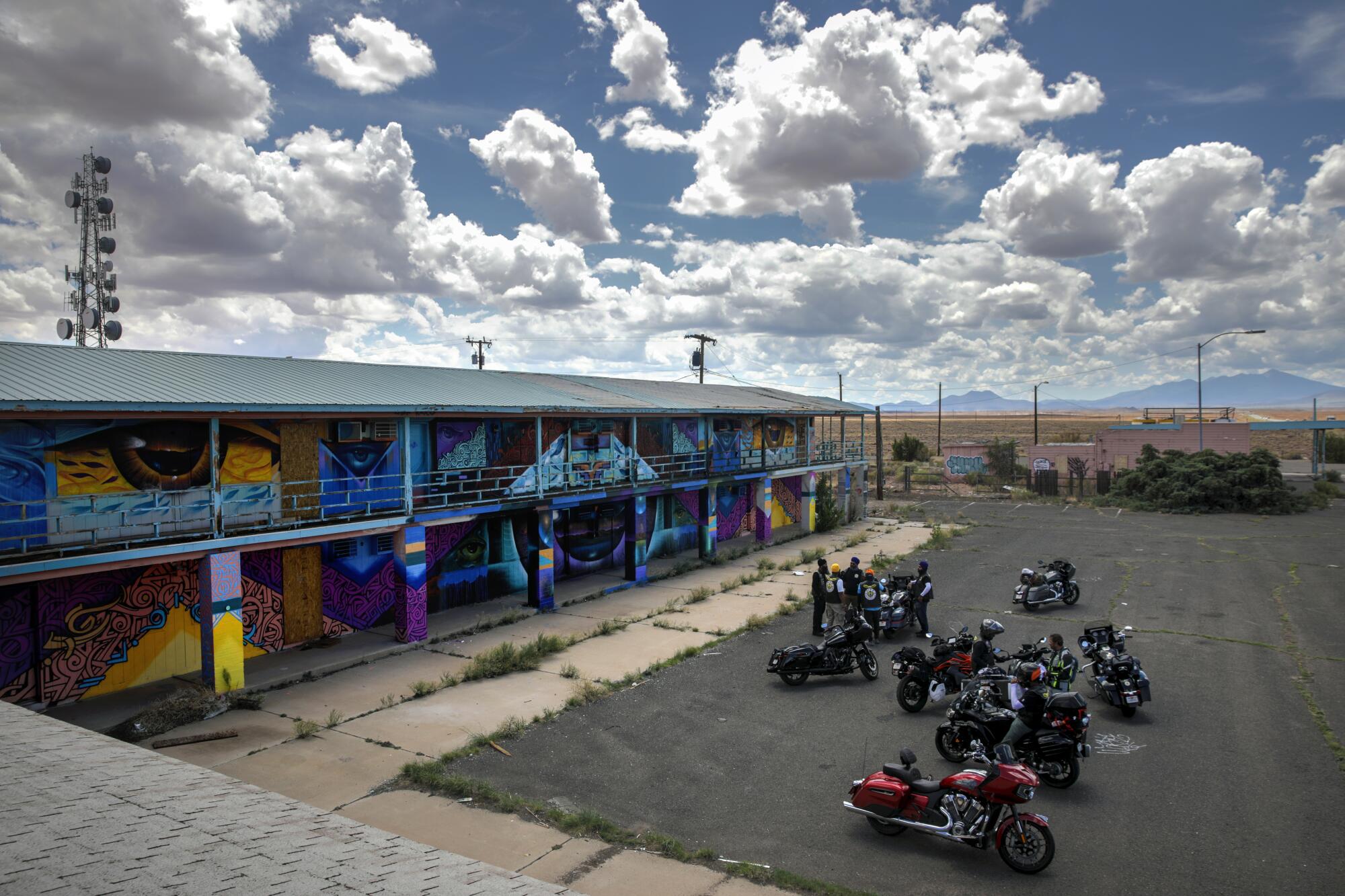
For the next few hours, they toured the temple, stopping to gaze at a bullet hole by the entrance to the prayer hall, left as a reminder of the massacre.
At a ceremony under a large tent, the group listened to speakers, including politicians and children of the seven victims. They listened to retired Oak Creek Lt. Brian Murphy, who was the first officer on the scene and was shot 15 times by Page, who killed himself after another officer wounded him.
Not far from the tent, children ran around a playground, and a U.S. flag dangled from the ladders of two firetrucks parked next to the gurdwara. Two Army service members, wearing turbans, spoke to police officers.
The ceremony concluded with a vigil by a flagpole displaying the Khanda, a symbol of Sikhism. The motorcyclists knelt and placed white candles on the ground. No one spoke; no one cried. There was only silence.
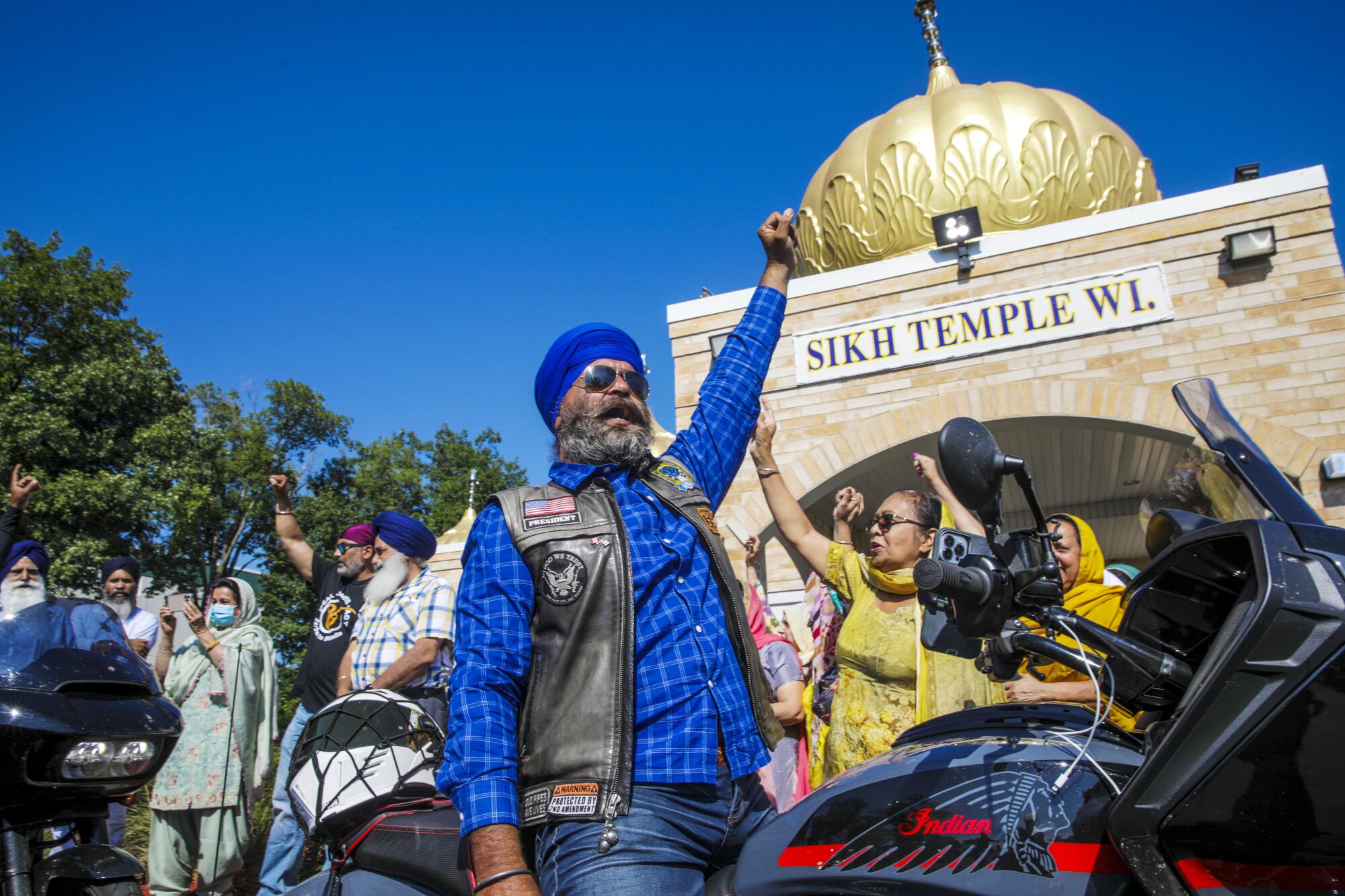
Today, as he looks back on his ride, Saggu likes to recall his encounter with Michelle Steuber, whom he met at the Four Corners Monument.
He spoke with Steuber and her family about the ride and the group’s message against hate amid a rise in white nationalism. Steuber, a 46-year-old eighth-grade teacher, told him she would share what she’d learned with her students.
It was a proud moment for Saggu. He figured that if one student had learned about Sikhs, then maybe other turbaned children wouldn’t be bullied — the way his son had been in Ohio.
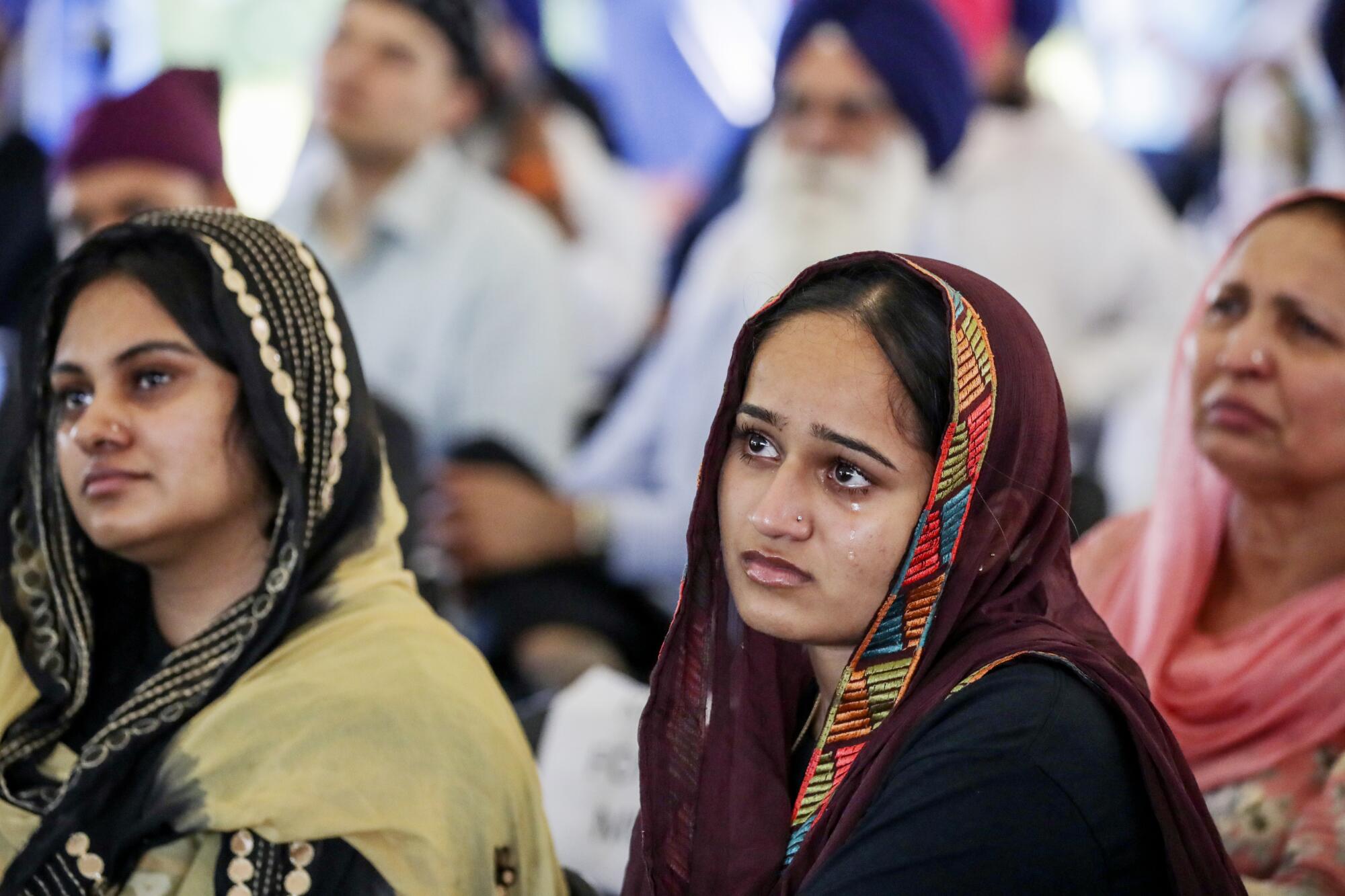
Watch L.A. Times Today at 7 p.m. on Spectrum News 1 on Channel 1 or live stream on the Spectrum News App. Palos Verdes Peninsula and Orange County viewers can watch on Cox Systems on channel 99.
More to Read
Sign up for Essential California
The most important California stories and recommendations in your inbox every morning.
You may occasionally receive promotional content from the Los Angeles Times.
